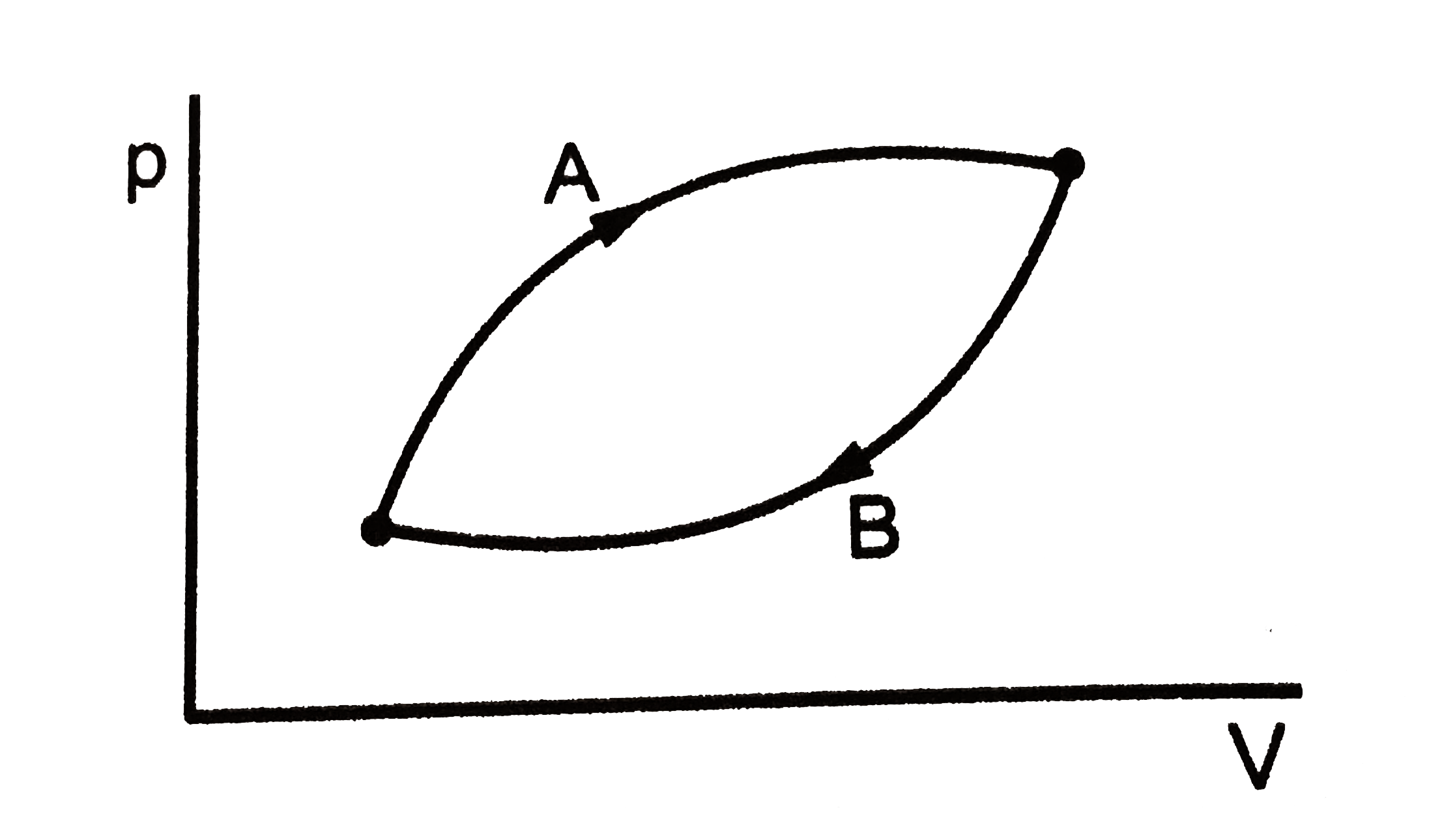The magnitude of ethalphy changes for reversible adiabatic expansion of a gas from volume to (in is and for irreversible adiabatic expansion for the same expansion is . Then
when and are the changes in magnitudes for the internal energy of gas in the two expansions.
and
We know that work done in a reversible expansion process is always greater than in a irreversible expansion process Using the first law of thermodynamics, Thus, decrease in will be large in reversible adiabatic than irreversible adiabatic expansion and since , we can conclude that in reversible adiabatic expansion will be greater than in irreversible adiabatic expansion.
Now, , and
Topper's Solved these Questions
- THERMODYNAMICSBOOK - CENGAGE CHEMISTRY ENGLISHCHAPTER - THERMODYNAMICSEXERCISE - Exercise
1 Videos
- THERMODYNAMICSBOOK - CENGAGE CHEMISTRY ENGLISHCHAPTER - THERMODYNAMICSEXERCISE - Ex 6.1
26 Videos
- STOICHIOMETRYBOOK - CENGAGE CHEMISTRY ENGLISHCHAPTER - STOICHIOMETRYEXERCISE - Archives Subjective
33 Videos
Similar Questions
The magnitude of enthalpy changes for irreversible adiabatic expansion of a gas from 1L to 2l is ΔH1 and for reversible adiabatic expansion for the same expansion is ΔH2. Then
View SolutionThe magnitudes of enthalpy changes for irreversible adiabatic expansion of a gas from 1L to 2L is ΔH1 and for reversible adiabatic expansion for the same expansion is ΔH2. Then
View Solution
Knowledge Check
A gas is expanded form volume V0→2V0 under three different processes as shown in the figure . Process 1 is isobaric process process 2 is isothermal and and process 3 is adiabatic .
Let ΔU1,ΔU2andΔU3 be the change in internal energy of the gas in these three processes then
 AΔU1>ΔU2>ΔU3BΔU1<ΔU2<ΔU3CΔU1<ΔU2<ΔU3DΔU1<ΔU2<ΔU3
AΔU1>ΔU2>ΔU3BΔU1<ΔU2<ΔU3CΔU1<ΔU2<ΔU3DΔU1<ΔU2<ΔU3
What happens to the change in internal energy of a gas during adiabatic expansion?
View SolutionRefer to figure. Let ΔU1 and ΔU2 be the changes in internal energy of the system in the processes A and B. then
View SolutionA gas is expanded from volume V0=2V0 under three different processes. Process 1 is isobaric process, process 2 is isothermal and process 3 is adiabatic. Let ΔU1,ΔU2andΔU3 be the change in internal energy of the gas in these three processes. then

View SolutionA sample of gas expands from volume V1 to V2. The amount of work done by the gas is greatest when the expansion is
View SolutionRefer to figure. Let ΔU1 and ΔU2 be the changes in internal energy in the system in process A+B and ΔW be the net work done by the system in the process A+B,

View SolutionAssertion In adiabatic expansion the product of p and V always decreses
Reason In adiabatic expansion process, wrok is done by the gas at the cost of internal energy of gas.
View SolutionFor an adiabatic expansion of an ideal gas the fractional change in its pressure is equal to
View Solution
